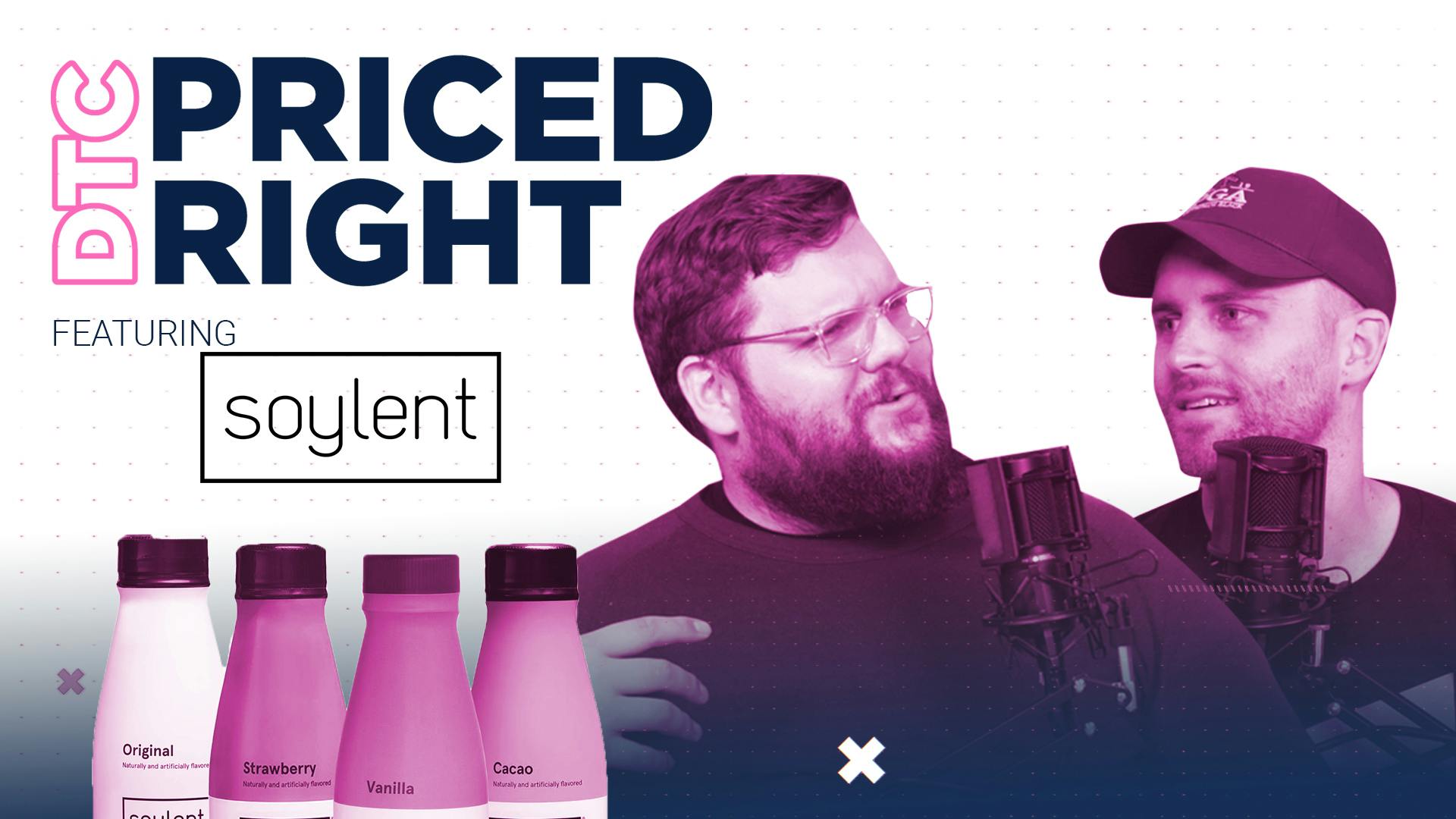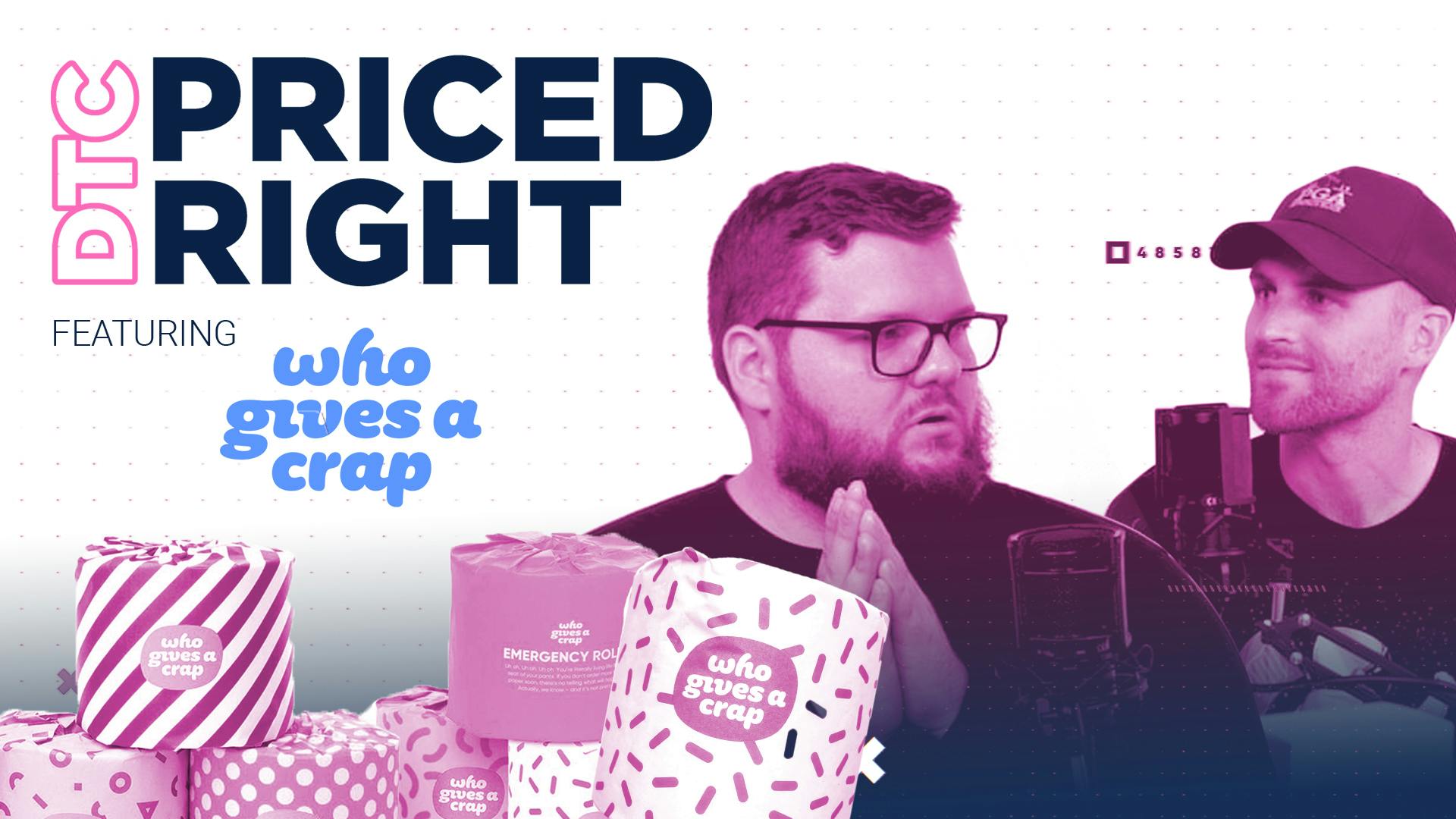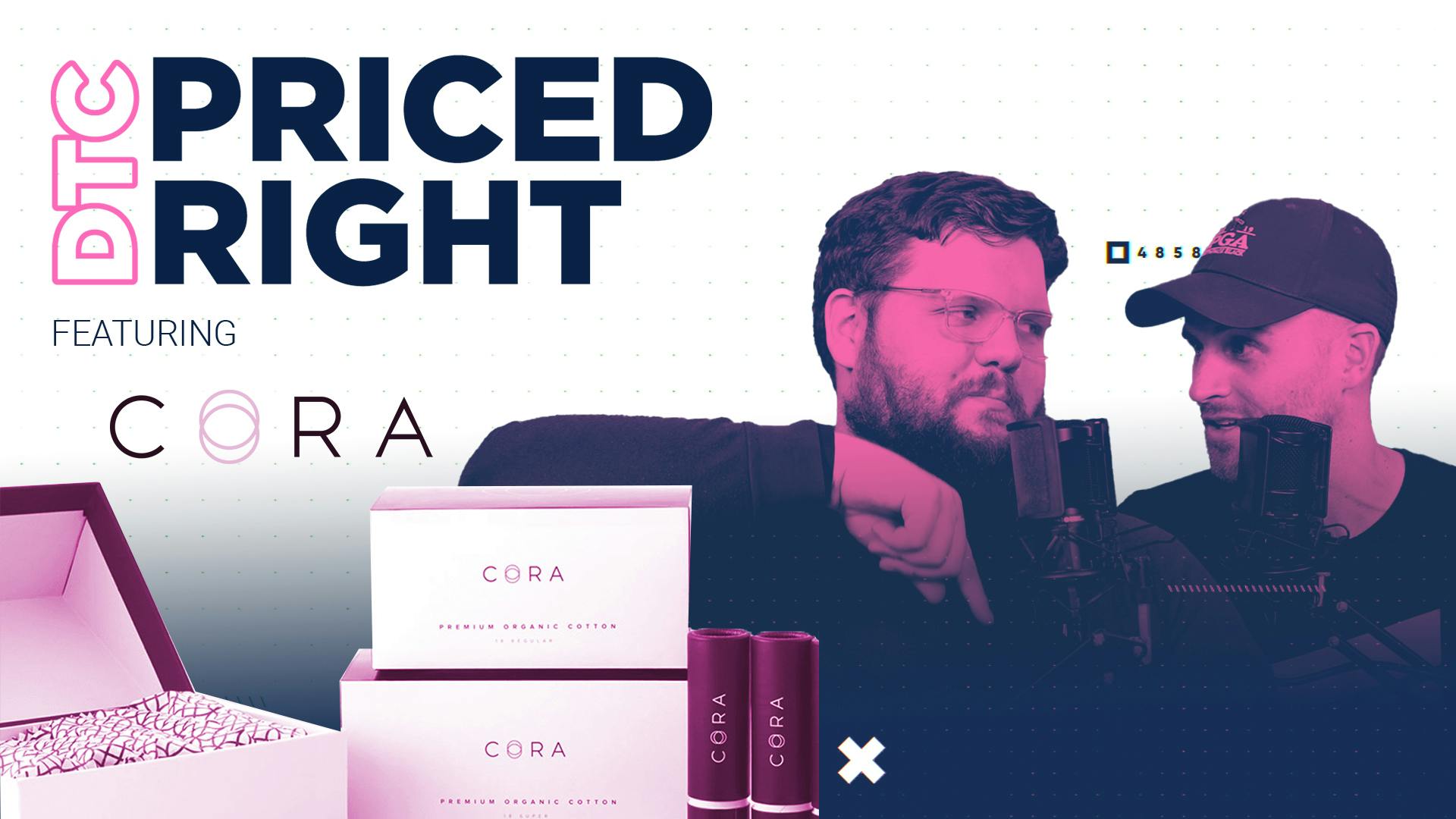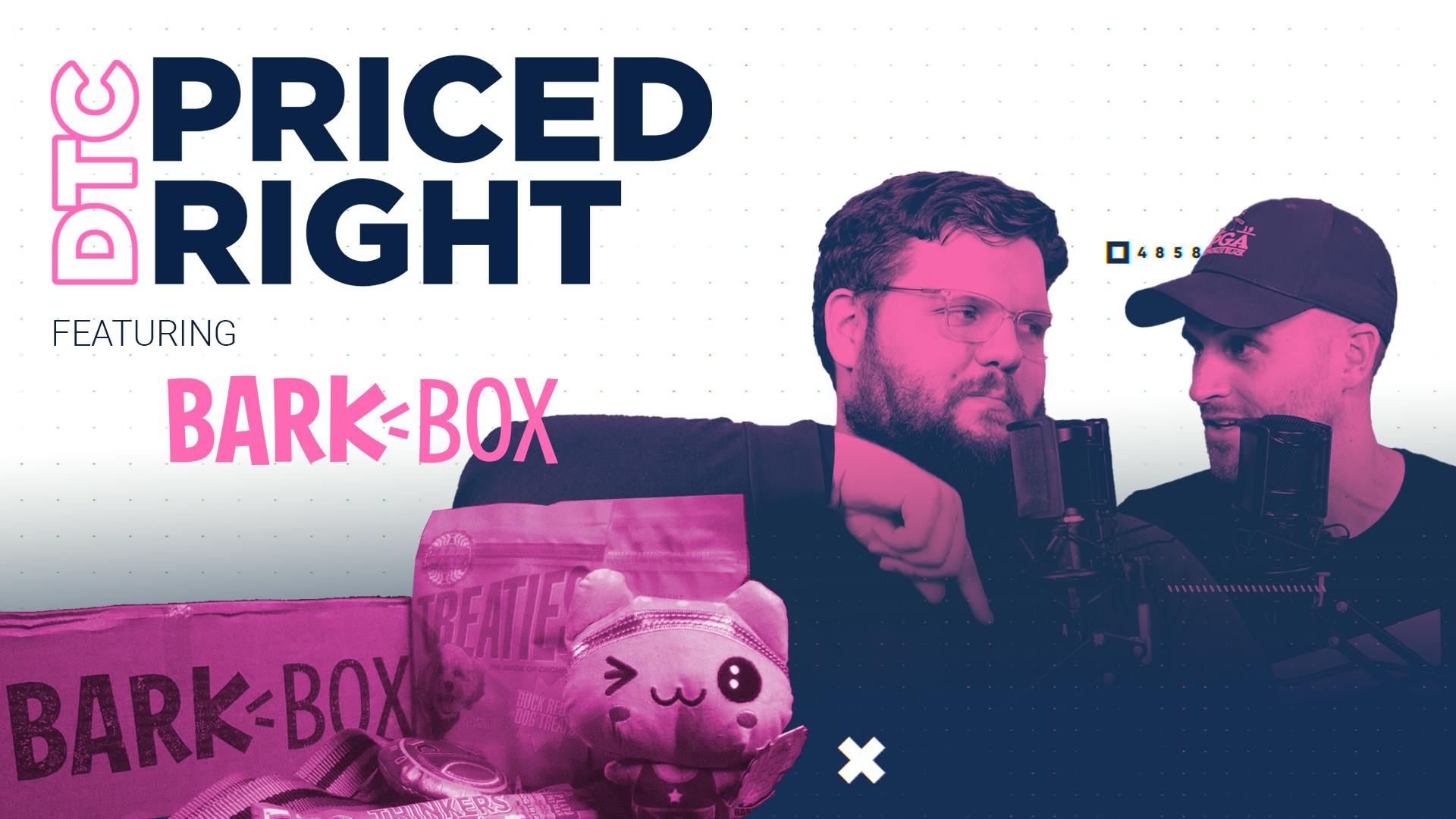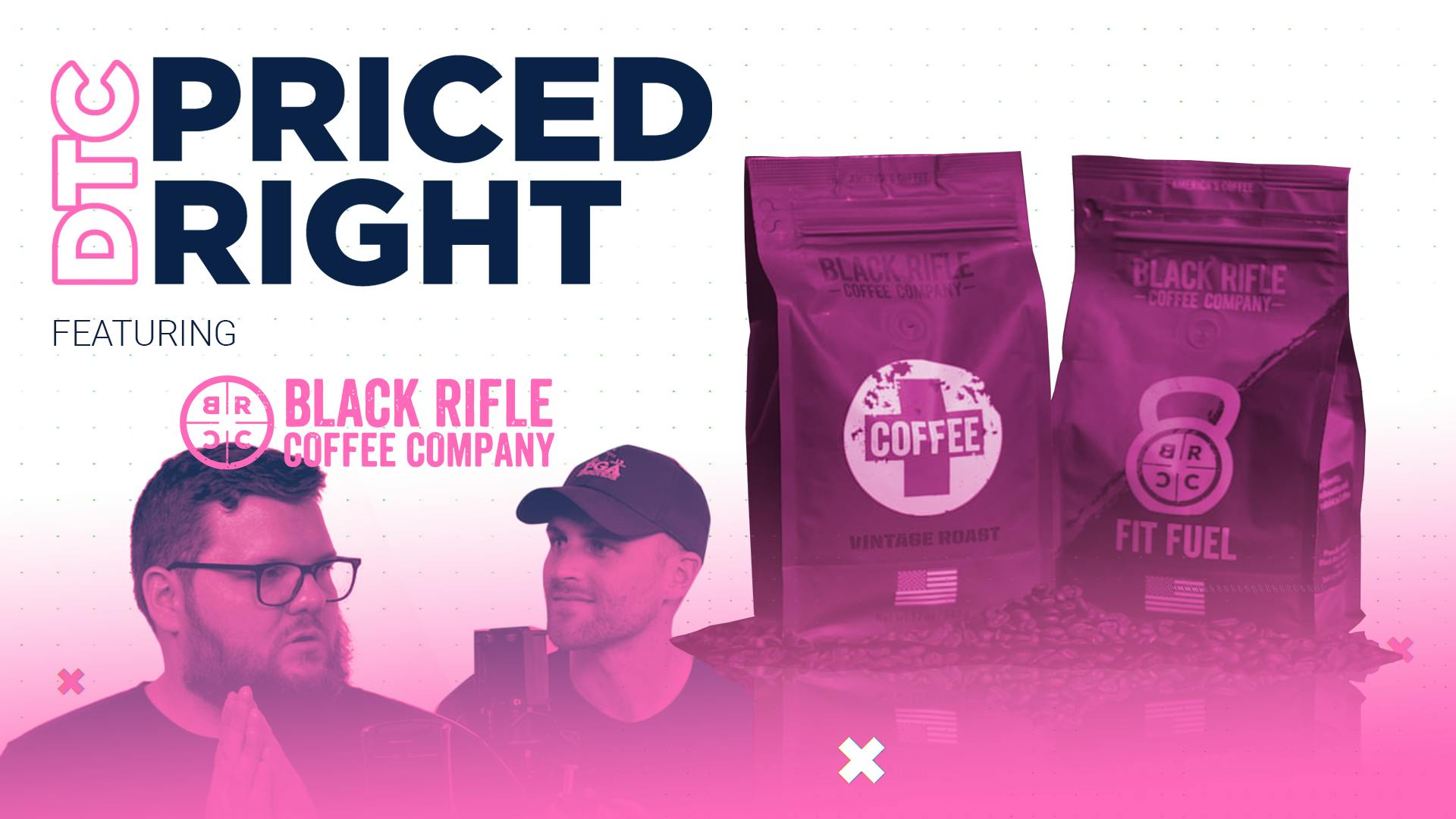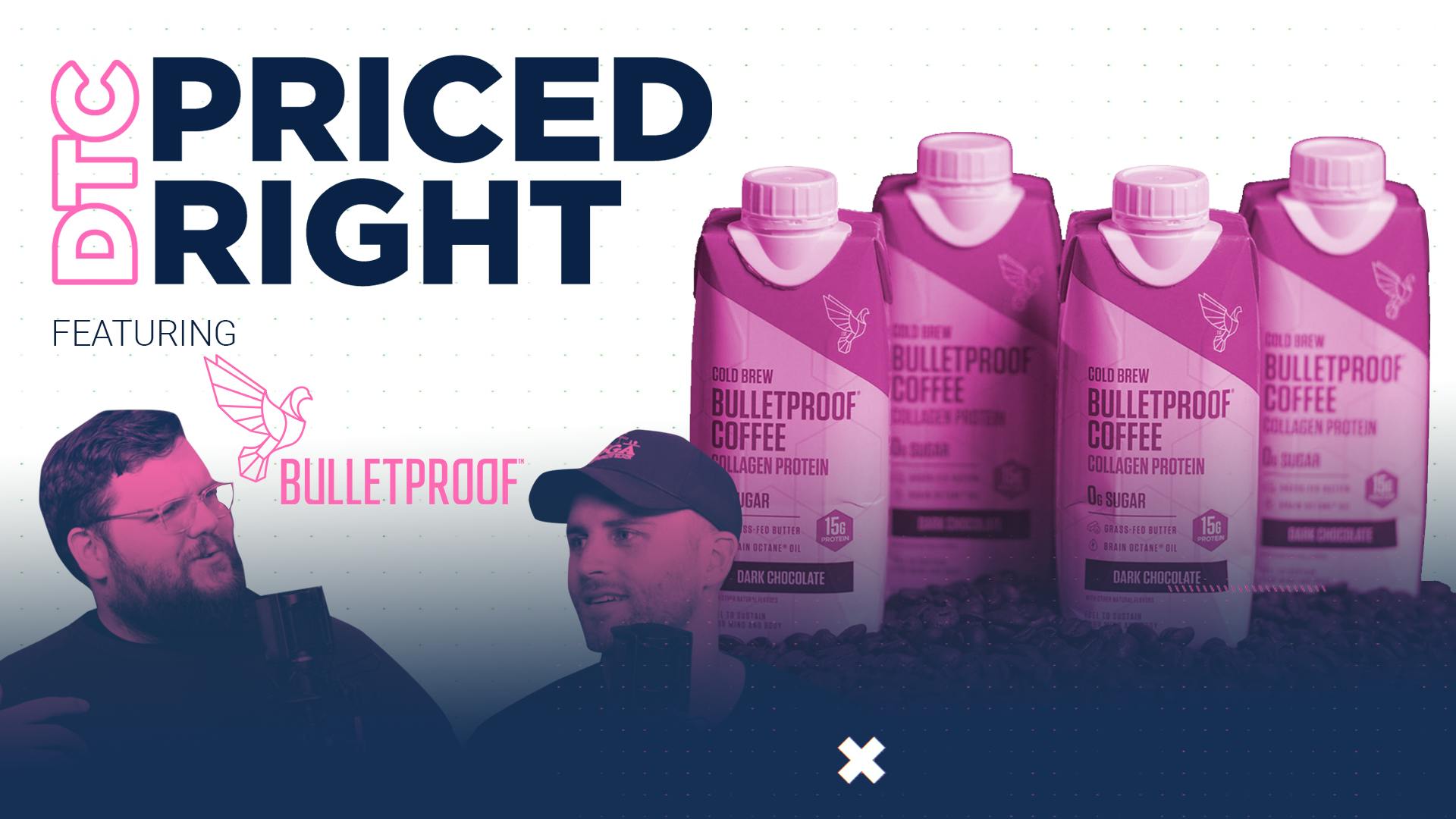
Ritual is clearly underpriced
This episode might reference ProfitWell and ProfitWell Recur, which following the acquisition by Paddle is now Paddle Studios. Some information may be out of date.
Please message us at studios@paddle.com if you have any questions or comments!
Below are some valuable takeaways you can use for your own business.
This week we're talking about the vitamin and supplement space. A space that is full of many terrible companies. But I think we've found the right one—the one that's doing this really well. That company is Ritual. We're gonna be talking about what Ritual is doing really well with their pricing—particularly with their branding and their positioning—and what they're doing not so well and needs to be optimized.
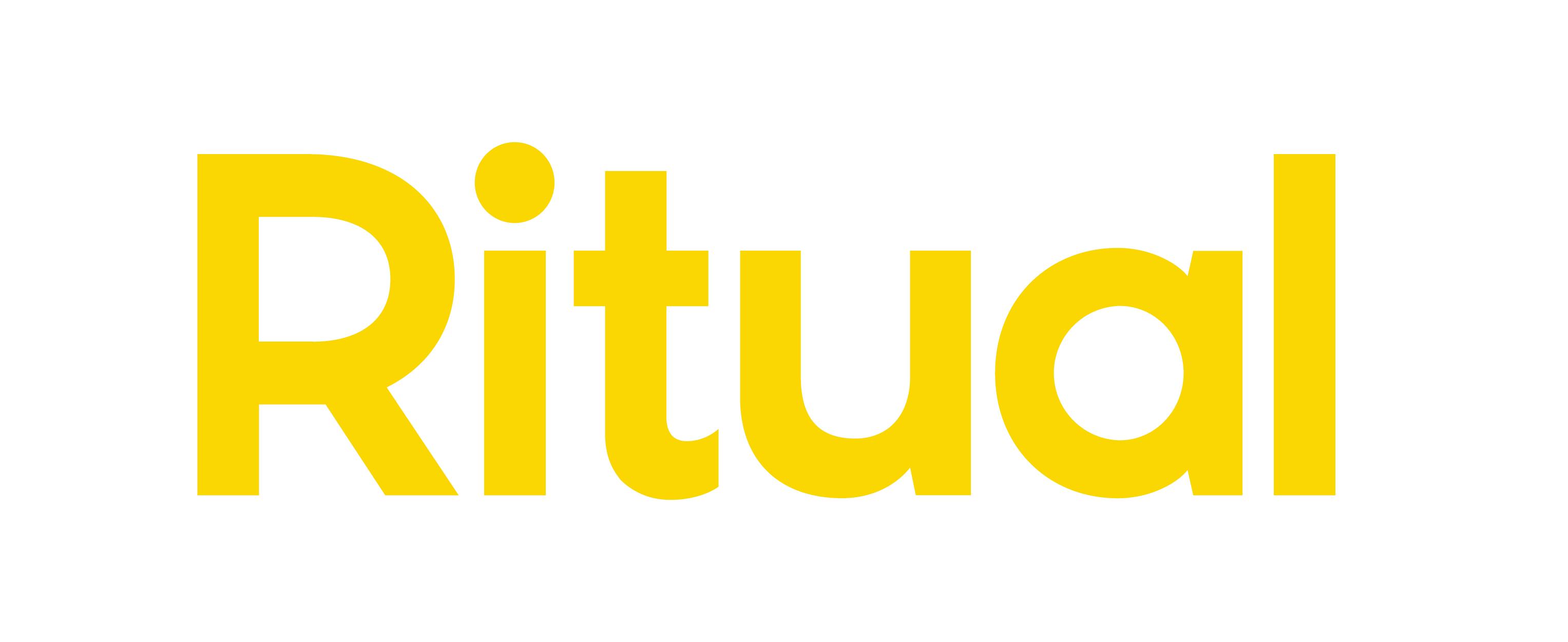
Ritual has created a new kind of multivitamin. And they've managed to create a beautiful and scientifically-backed product with phenomenal branding and messaging to match. But, is their pricing strategy optimal?
Below are some valuable takeaways you can use for your own business.
- Handle objections upfront in a value-laden way
You need to understand what your customers’ objections are, as well as what value propositions will keep them engaged and eventually convert them. - Align your positioning with your value propositions to address objections
- Quarterly, semi-annual, and annual offers help with churn immensely.
Longer-term contracts attract more high-value customers that actually want and are committed to your product. They reduce churn and they also drive lifetime value (LTV). And with a daily-use product, Ritual could very easily offer these longer terms and lock customers in. - Offer longer-term plans in exchange for a dollar amount off, a number of months off, or even a free item if possible.
- Collect and segment willingness-to-pay data to ensure you're not averaging out your price.
Make sure you understand your segments and which one you’re going after to price appropriately. Ritual’s pricing is at the high end of a customer that is not their target customer, and at the low end of a customer that is their target customer. They’ve averaged out their price, but are consequently underpriced for their target segment. - Optimize for the segment that loves and will buy your product.
Ritual
The popularity of multivitamins has increased rapidly in the last few decades and are now the most commonly used supplements in the world. It’s estimated that over half of all Americans take some sort of vitamin or supplement. So it’s no surprise that this is a multi-billion dollar industry expected to reach a global worth of almost $300 billion by 2024.
Ritual—a vitamin subscription that focuses on the most essential nutrients for health—was founded in June of 2015 by Katerina Markov Schneider. Her pregnancy is what led her on the journey to eventually start Ritual. In her quest to purge her home of any harmful ingredients she soon realized the vitamins also contained questionable ingredients. This is what sparked the idea to develop a vitamin void of all the things she didn’t like or need.
Schneider teamed up with vitamin industry vet Dr. Luke Bucci, making him Ritual’s VP of R&D. And from the ground up, they created a new kind of multivitamin for women.
Ritual's success
Today, women, men, kids and teens are on board. And Ritual’s success is directly related to two principal components:
First, every decision the brand makes revolves around its consumer. The company admits that utilizing its social media strategy has been key to cultivating a following of wellness enthusiasts.
The second contributor to Ritual’s success is that they have done a phenomenal job with its branding and messaging. Its vibrant aesthetic beautifully spans across the entire company from its website, social media, and packaging. Ritual has combined intentional design, photography, and messaging, creating a brand that consumers want to be a part of.
Ritual is a multivitamin that includes multiple nutrients formulated with a certain life stage in mind for women—and now men—enclosed in just two daily capsules. Ritual’s beautiful clear capsule design is not only aesthetically pleasing, it’s scientifically designed with a purpose. The beadlet-in-oil technology that is used for most of the multivitamins it offers, and the capsule-in-capsule technology in its Essential Prenatal line, is an innovative design that allows placement of both oily and dry nutrients into one multivitamin formulation.
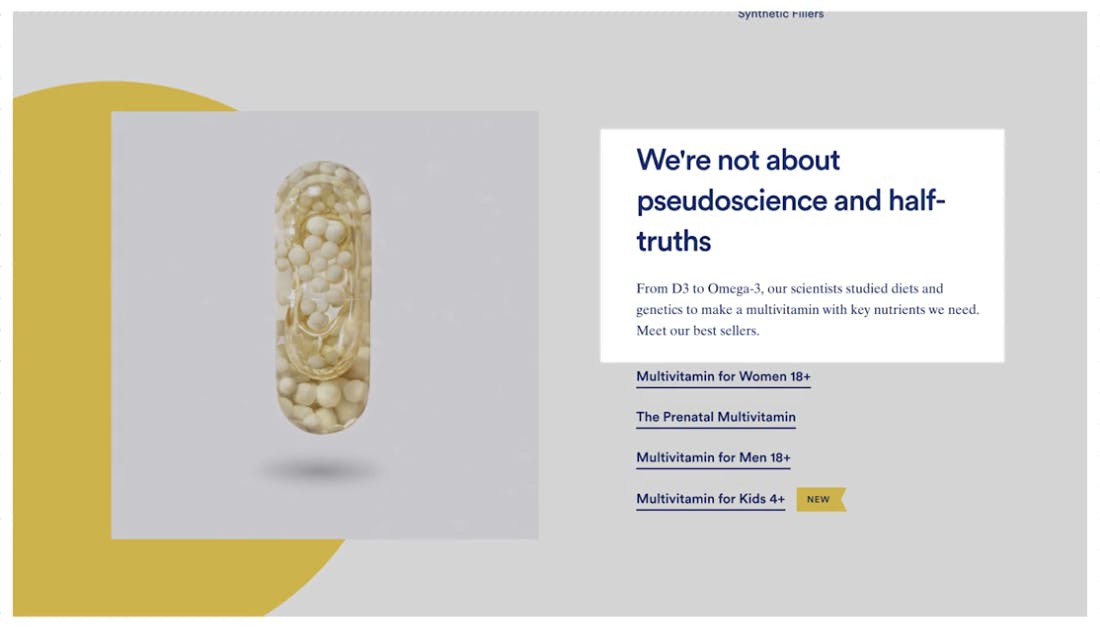
All of the ingredients used are rigorously tested, clean, vegan friendly, free of Gluten, major allergens, artificial colorants or synthetic fillers, and are Non-GMO.
According to Ritual “the future of vitamins is clear,” and now creates products for the whole family. Customers love the transparency, literally and figuratively speaking. And investors feel the same way—Ritual has, as of 2019, secured $40.5 million in funding and has sold over one million bottles of its vitamins. Add that to thousands of rave reviews.
Vitamins get a bad rap
I am so overwhelmed when I go to the vitamin aisle. There's 17 different vitamin Ds. There's like four different brands. It's crazy. I don't know what to do and everyone tells me this is fake.
It's why the supplement market, in general, gets such a bad rap. And some of the vitamins are absolutely legit and have some of the essentials that we need. But then there's just so much expansion beyond that.
What I really liked about Ritual is that they're very clinical-trial driven. Which, you don't hear of with supplements. And this is the first brand where I felt I should be taking multivitamins. What's really funny is that doctors have told me, my significant other has told me, and my parents have told me to take them, but it took Ritual to convince me.
Positioning should be focused on how you're different
First up, the big thing we can learn here is that positioning should be focused on how you're different. We already alluded to this. There are so many different things going on within the supplement and vitamin markets. And what I love about Ritual is that even on their homepage, it's all about the future of vitamins. They clearly show you that they’re not about pseudoscience and half truths, and that you deserve traceability for the ingredients. And they use the skeptics as case studies.
I think what they’ve done here is really powerful. I also like how they've actually innovated the vitamin, you know, with the slow-release vitamins. I have no idea if this is real or not, but I trust them based on how much evidence they're actually providing, which I think is great.
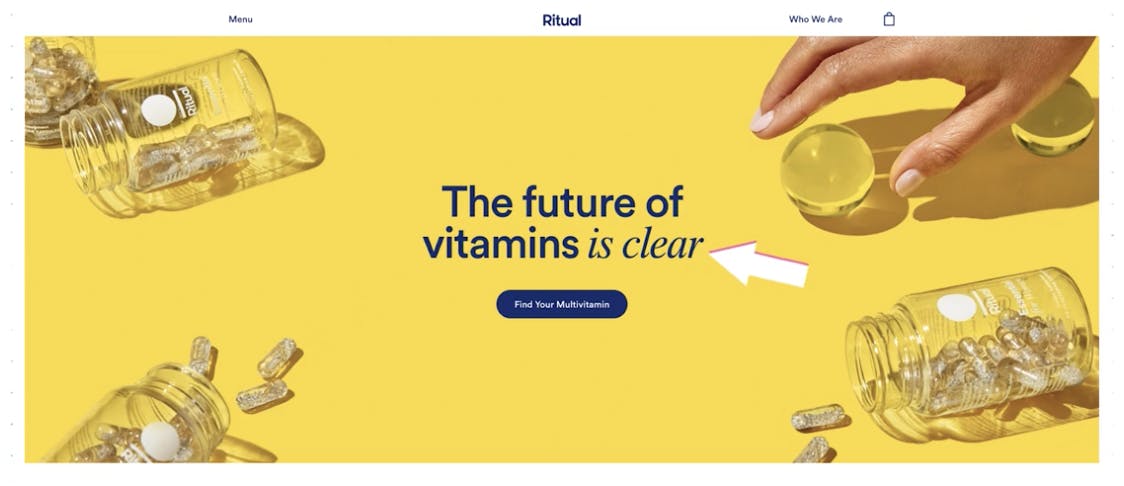
And we love the play on words in their marketing copy, as well—the hero copy of, "The future of vitamins is clear," because their actual vitamins are obviously clear.
His and her bundles help with building a habit
They have versions for men, versions for women, and then they have one that's shared. This is absolutely genius because it helps you cultivate that habit.
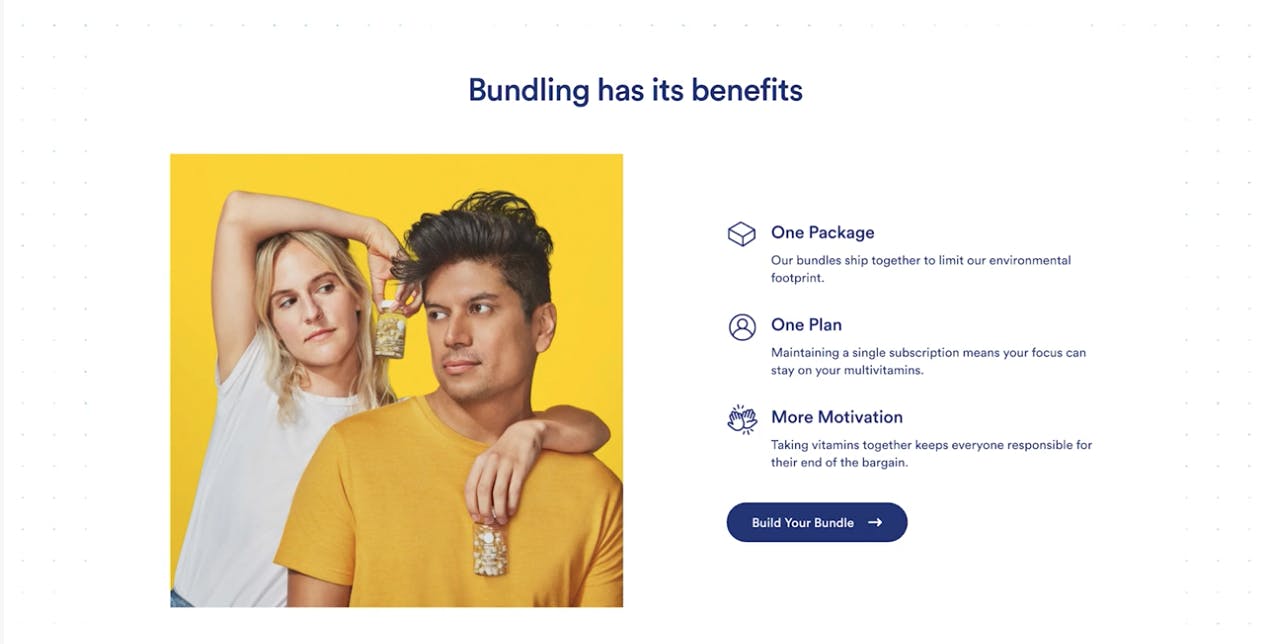
You can also build your own bundle. I think this is something that not only boosts that overall average revenue per user, and that average order value (AOV), but it also helps boost that retention because you're getting both people potentially bought it. And it's use-case driven. It's super important to be able to position that and let people know where they fit in.
Where does our data come from?
Here at ProfitWell, our Price Intelligently software combines proprietary algorithms and methodologies with a team of pricing experts who think about this stuff more than anyone else to help companies optimize their monetization strategy. We do this by going out into the market and collecting data from current and prospective customers, having the ability to collect data from everyone, from a soccer mom or dad in the middle of Kansas, all the way to a fortune 500 CIO in South Africa. We then take that data and run it through our algorithms and analyze it in every direction to determine a company's ideal customer profiles, as well as which segments value, which features and which segments are willing to pay more, all in the spirit of determining how a company can use monetization for growth.
Handle the objection up front in a value-laden way
Ritual talks about traceability, the double entendre of the future being clear, but we wanted to get some actual data on this. So we collected data from people who were and weren’t taking vitamins, who had low health affinity—meaning health wasn't a huge priority for them. And then we collected data from people who did have a high health affinity, and were taking vitamins and supplements. We couldn't find any high health-affinity folks that weren't taking vitamins or supplements, which is really interesting. We wanted to look at what the relative preference for different value propositions was. Things like, ingredient traceability, all the way up to, all the nutrients and vitamins you need.
What was fascinating to see is that the folks who weren't taking supplements, were really into this whole concept of all the ingredients you need, everything that's in one different package. And relative to the folks who had high health affinity, they don't really believe that this is actually going to be all in one. And I think that's not because they don't believe in multivitamins, but likely because they’re taking a whole host of things.They have a whole stack and this might be their multivitamin in the stack, but everything else is going to be included, which is really interesting.
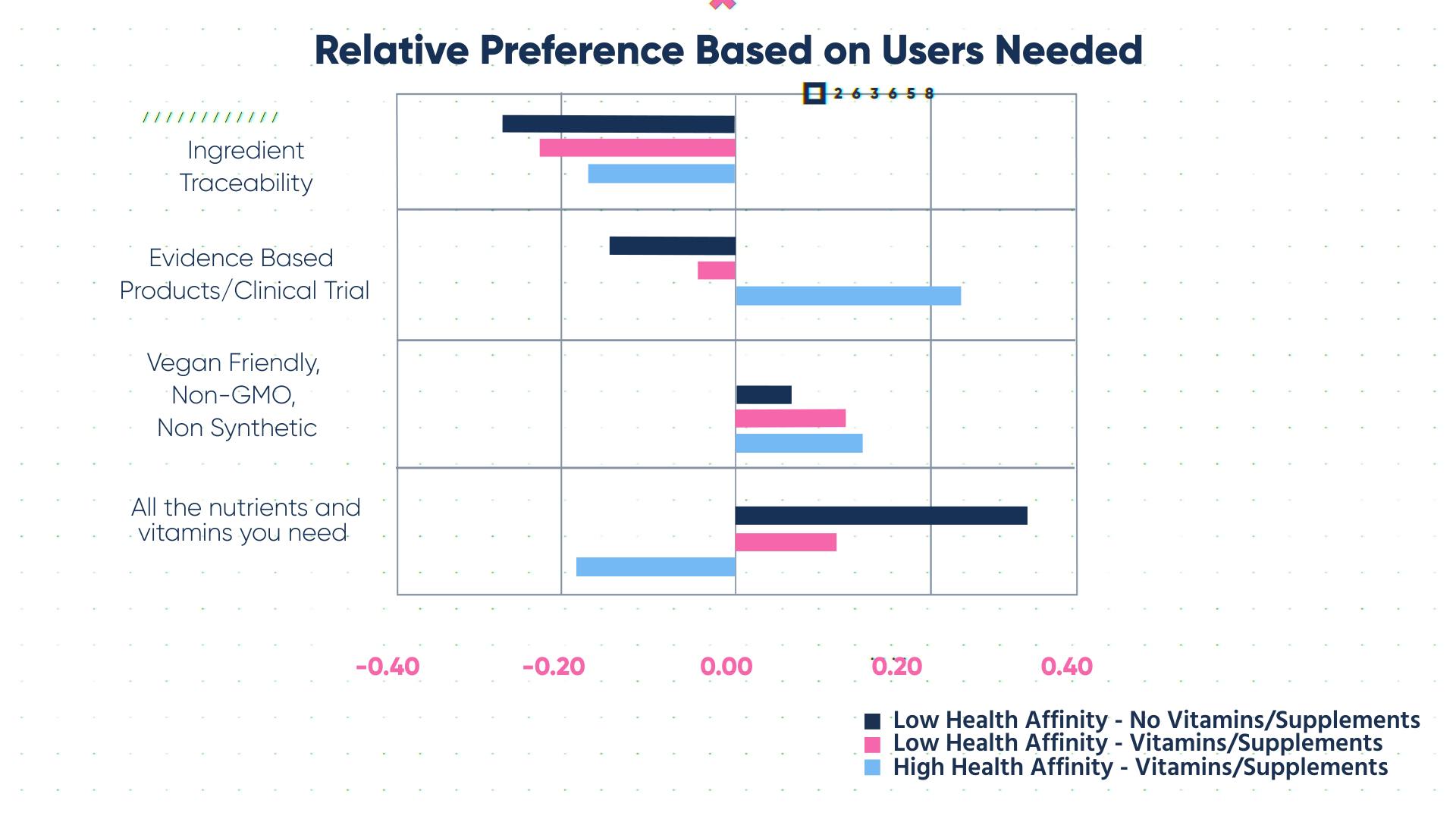
And on the high end, the high-health affinity folks’ preference was the evidence-based products, because I think they're equally as aggravated with taking certain vitamins and then finding out that they don't help. And so having a little bit of a trusted source is really powerful. And as we'll find out in some of the pricing data, I think that Ritual needs to do a better job of taking advantage of that, rather than going after the lowest common denominator. I don't think they’re actively doing that, but I think they have just naturally done that, particularly with their pricing.
The big takeaway here is, know how your different customers respond to the different features and attributes of your product. You want to make sure that that positioning aligns and that's something where you can naturally know, or you can do the research and then align things overall.
Quarterly, semi-annual, and annual offers help with churn immensely
We've talked about this before in the past with DTC, and I don't understand why Ritual doesn't have this at least in the checkout process. Maybe they have it afterwards, but definitely not in the checkout process.
Getting someone to sign up for an entire year, a quarter, or six months, etc., will boost LTV. You're going to make it way easier on them. They're not going to have to keep coming back and ordering it. And this is a daily-use product, so you can send them two months, you can send them a month, etc. It’s one of those things that you can lock them in.
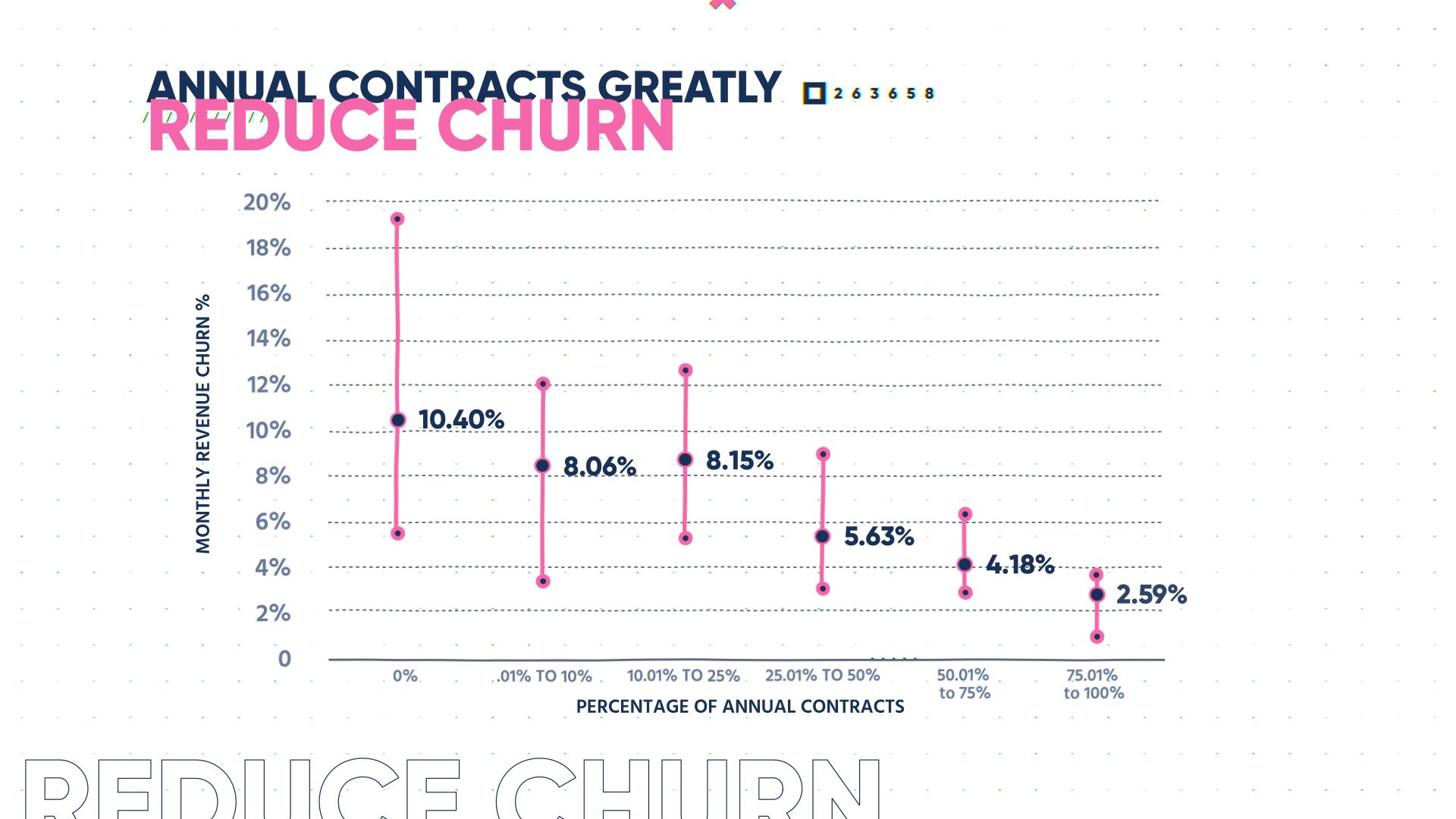
Additionally, based on data, you can use a percentage off, but that's likely not going to be as effective as some of the other things that just register better with the human brain and human psychology, like a certain dollar amount, certain number of months, or even a free item if possible.
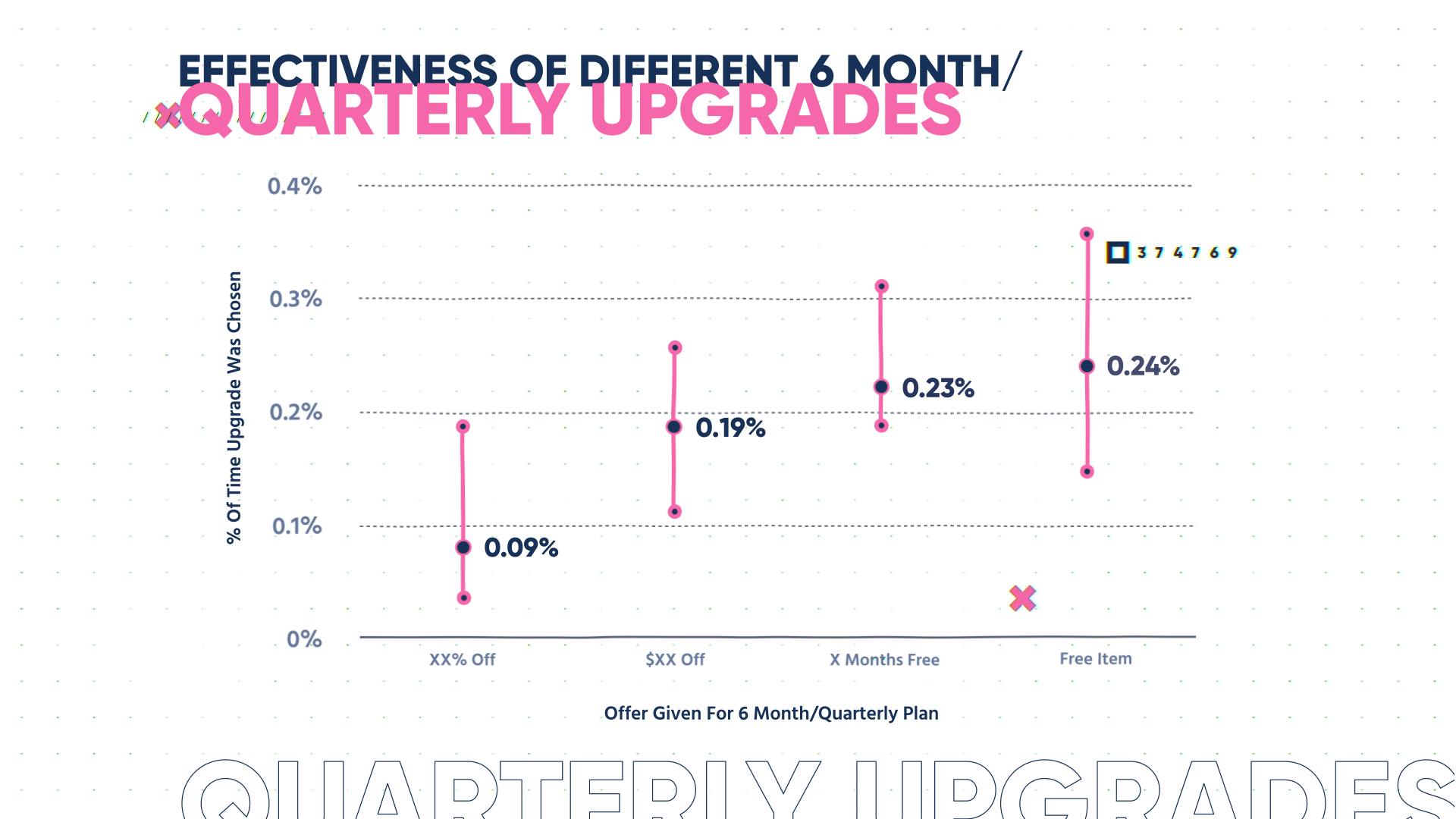
To be super clear, what the data's showing is the take rate based on different offers, the free item doesn't necessarily have to be related exactly to what they're buying. ButcherBox does this really well. In order to sign up, or to incentivize you to do something, they'll give you free bacon for life, as long as you're a customer—assuming that you're paying for something. So it’s baked into their margins.
Whereas here, Ritual could maybe give the Hers, in the His and Hers bundle, for the first month or something like that. Right now, they're giving $10 off that bundle. And then, I believe, that goes away in the second month. Just use that to your advantage and offer up a discount on the first month or so, if they sign up for three months. They can do that right now, and then boost their LTV overall.
Segment-based, willingness-to-pay data prevents averaging out your pricing
And this is a little bit of a subtle point, but we went out to Ritual customers and current customers and we collected a bunch of information around willingness to pay. We scored this very similar to the relative-preference data before, where we looked at people with low affinity for health and high affinity for health, and then split this out between men and women. We collected data on non-binary folks, but there wasn't enough data to actually put it into this output here. What's interesting on the men and women's side is that those who have low affinity, the price for Ritual, which is about $30 a month, is at the high end of low-affinity folks. And it's at the low end of the high-affinity folks.
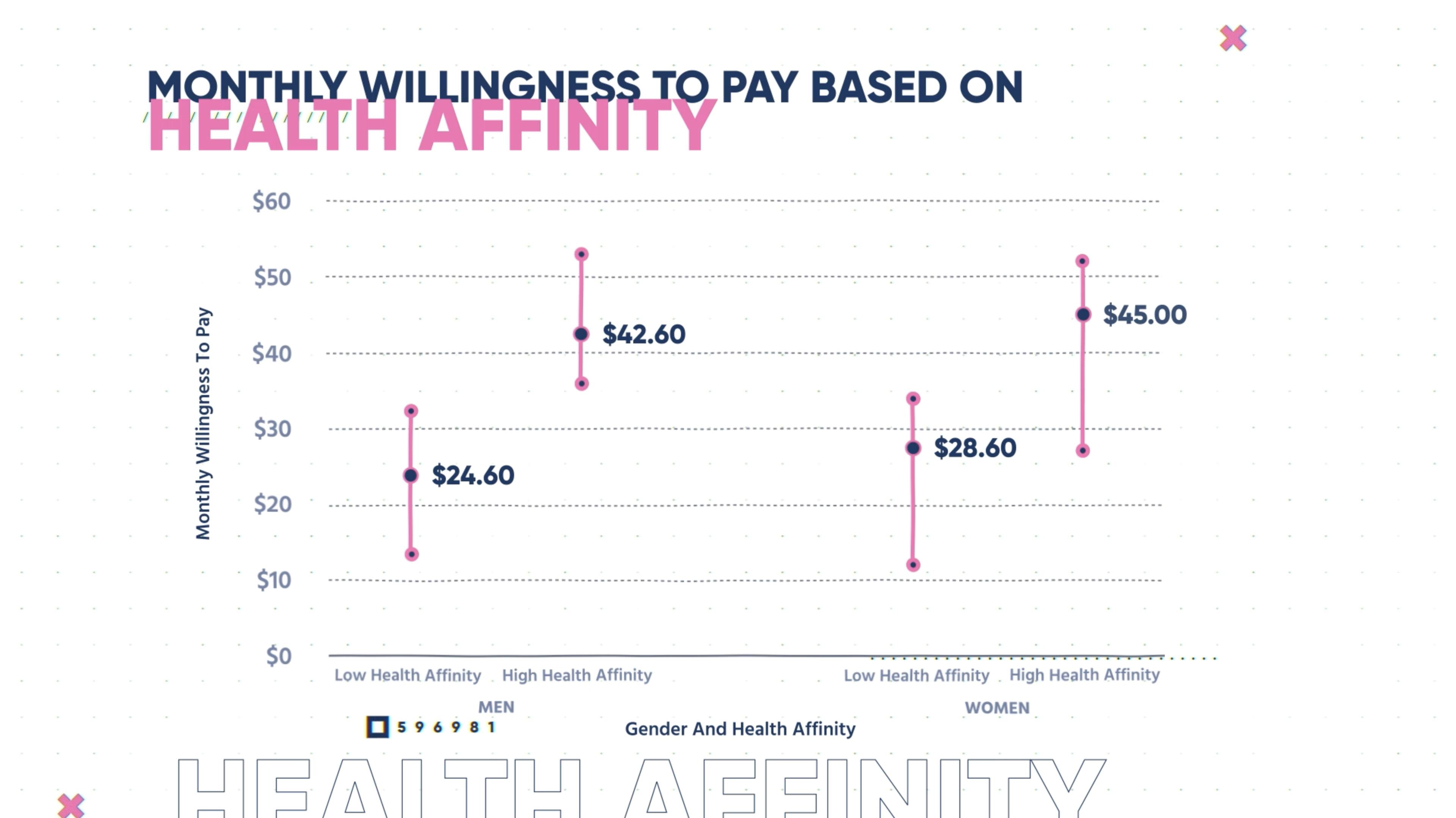
The low-affinity folks probably aren't likely to buy anyway. I think these are more expensive vitamins, relative to the rest of the market. Basically, high-affinity folks are more than willing to pay about $40 bucks—the low end of the women. I think this gets into the pink tax a little bit, where are women willing to pay more or have they just paid more for so long that they're just expecting to pay more?
Long story short here, I think Ritual’s under priced right now. And I think they've averaged out their price. I don't think it's helping them at all. I don't think those people who are low affinity are going to be target customers for them. They need to optimize for the folks that are going to buy and are super into your product. That’s the segment you're targeting, which is a little bit more of a premium segment. And take advantage of just how beautiful the brand is.
- Handle the objection upfront in a value-laden way by understanding what those objections are. What are those value propositions that will push that customer to convert, or that are going to continue to have them investigate. Sometimes they might not convert right away, but you want to keep them engaged, and ultimately, buy.
- Quarterly, semi-annual, and annual offers help with churn immensely. They also drive lifetime value (LTV). This is something that Ritual could do very easily, and will really help them out.
- Make sure you're collecting willingness to pay data, and then segmenting it to make sure you're not averaging out your price. We found with Ritual was priced at the high end of a customer that's really not going after them. And at the low end, if not too low, for a customer that they're actually targeting. So make sure you understand which segment you're going after, and then price accordingly.
Who's up next?
Next week, we are talking about the pioneers of the meal replacement space. These are the folks I remember seeing on The Colbert Report back in the day. We're talking about the brand Soylent. We're going to learn a lot about what they're doing right, but there's quite a few things that they're doing wrong, or I should say, could be optimized.
